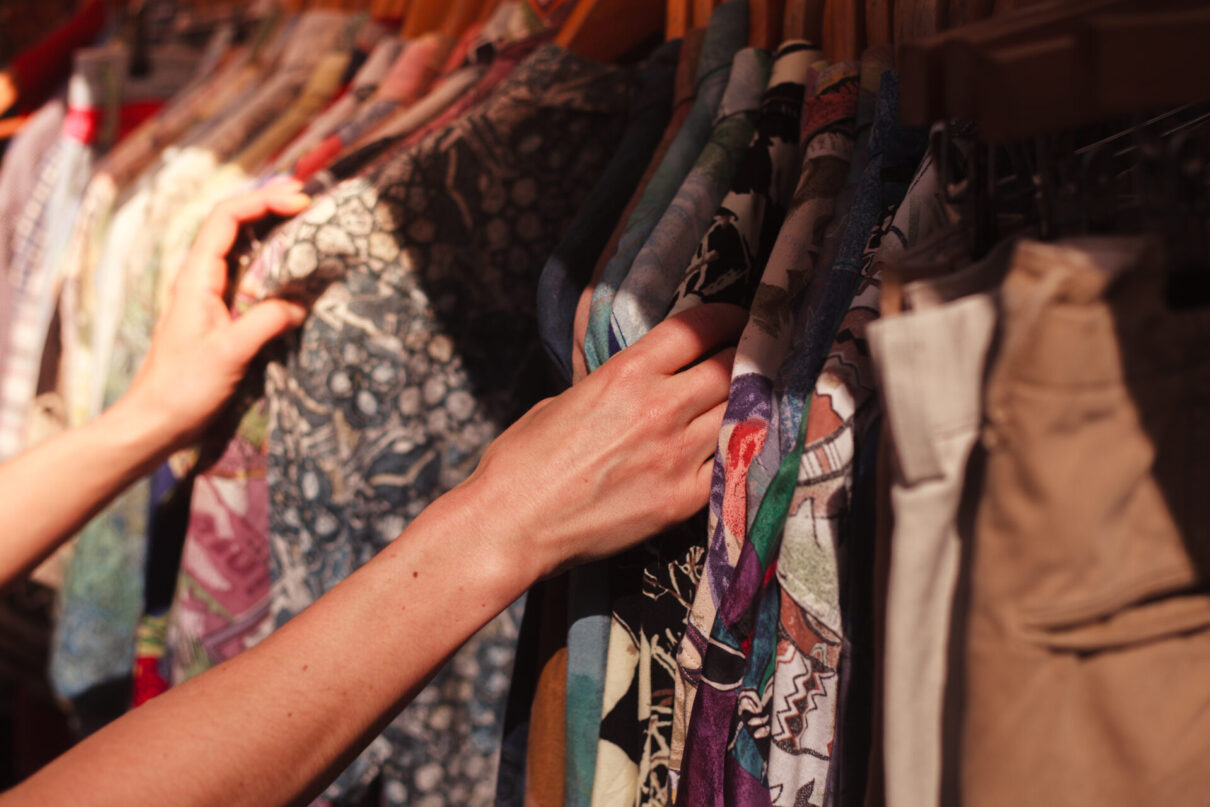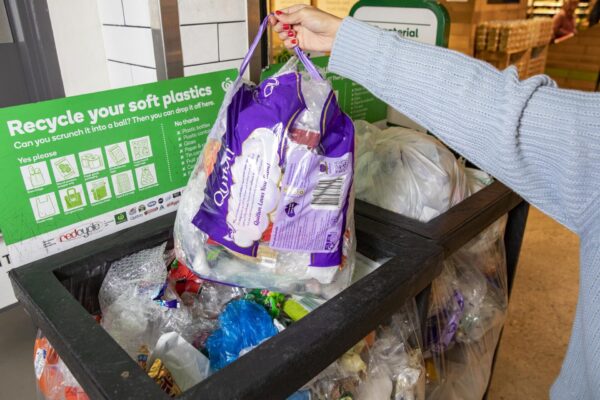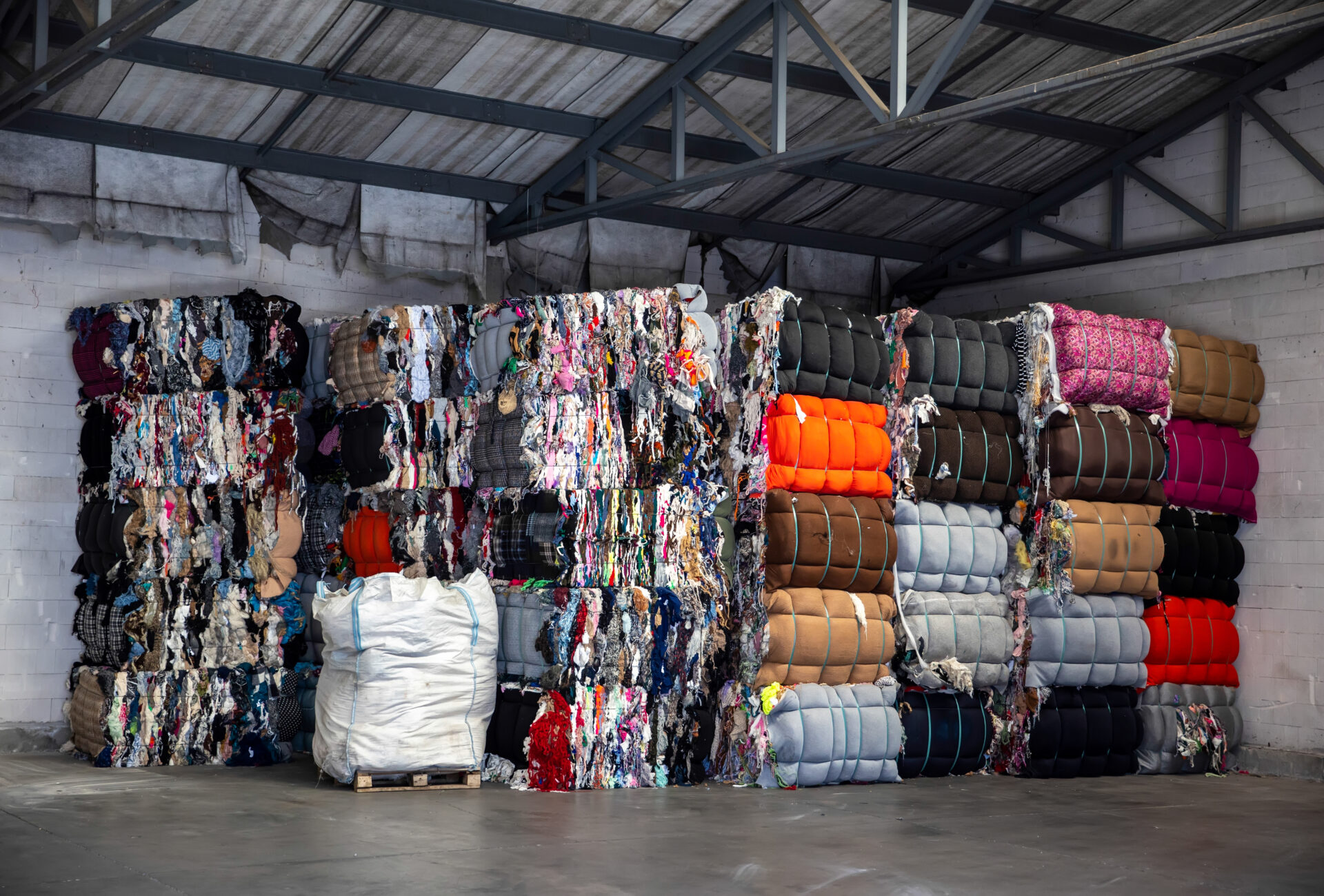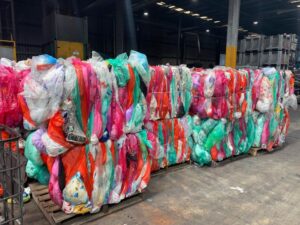The Seamless scheme and developing an Australian circular textiles industry

Every single year in Australia over 200,000 tonnes of textile waste go to landfill, and more than 100,000 tonnes are shipped overseas. Australia must somehow scale this 300,000-tonne mountain of clothing if the nation is to make the textile industry circular by 2030.
The Seamless Scheme
On June 18, 2024, the Federal Government announced that Seamless, a clothing product stewardship scheme to make Australian clothing circular by 2030, will be operational on July 1, 2024. The scheme is tasked with addressing the critical problems facing the clothing industry, with over 200,000 tonnes of waste ending up in Australian landfill annually. 62 brands will be signed up as members of the scheme by the time it officially launches. It’s commendable that the Government has taken the initiative to back a scheme addressing Australia’s enormous textiles waste problem.
From July 1, members of Seamless will contribute $0.04 for each new garment placed on the Australian market. $0.04 is not nearly enough of what is needed for the reuse, collection, sorting, decommissioning, recycling, transportation, labour and other costs involved in creating a circular clothing industry in Australia by 2030.
Instead, a contribution of $0.50 for each new garment (a more than 12-fold increase on the current proposal) is a more realistic figure that could support the above-mentioned circular operations. And indeed, there is speculation that the $0.04 levy of Seamless will be raised to a higher fee in the future. In its first 12 months, however, it is likely the initial goals Seamless may instead focus on developing better circular design practices.
Additionally, to enhance the likelihood of the success of the scheme, membership should be mandatory for all businesses putting products on the Australian market.
Australia’s clothing addiction
Australians are the biggest consumer of clothing waste in the world per capita. The average person buys 56 brand new items a year. We’re buying way too many clothes and only keeping them for short periods of time. The average garment is used seven times before being discarded. The average value per item purchased in Australia is $13. The waste statistics in Australia could potentially get higher. Very soon.
Ultra-fast fashion brands such as Shein and Temu are projected to make over $2 billion in sales in Australia alone this year. The vast majority of these sales are ‘fast fashion’ and much of it is untaxed.
This predominately cheap, poor-quality clothing, often made from plastic (in the form of polyester), is a large contributor to clothing waste in Australia.
Looking at the sales projections for Shein and Temu it seems our waste figures are on track to get even higher, and it is unclear whether these brands are joining, or intend to join, the Seamless scheme.
Even if they do, $0.04 for each new garment is not nearly enough to shift brand behaviour to reduce waste at the source. Without stronger incentives to do otherwise we may well see clothing waste figures continue or even increase. There is speculation that the $0.04 levy of Seamless will rise to a higher fee at some stage.

Turn off the taps!…The French tax
The scheme to manage waste is highly welcome, however, in the first instance, we need to address the waste at the source. If someone leaves the taps on in your home and you return to find your house flooded, you wouldn’t immediately run out to get buckets to manage the flooding. The first thing you need to do is turn off the taps. Then find ways to fix the flooding.
The French Government is adding an estimated $16 tax to every fast fashion item. This reduces the flow of fast fashion waste, protects the environment and protects French clothing businesses. We should turn off the taps of waste by having a similar tax on fast fashion here in Australia. The revenue raised from this should be invested into Australian businesses that manufacture with circular principles, minimal waste, use natural textiles and do not overproduce.
There are people who are understandably upset by our recommendation for a similar tax on fast fashion in Australia because businesses will push the costs onto consumers. For people struggling in a cost-of-living crisis and can only afford to buy fast fashion, we empathise. This policy is not designed to target them. There are affordable alternatives to fast fashion such as attaining free clothing from clothes swaps, they can restyle their clothes to create new outfits, buy secondhand and borrow but the most critical factor is for people to extend the life of their clothing and use them for as long as possible.
Toxic chemicals in our clothing
Fast fashion products have been found to contain toxic chemicals many times higher than safe and permitted levels. South Korean officials carried out an investigation on Shein products and some shoes contained 428 times the permitted levels of phthalates and some bags contained 153 times the limit. Research has indicated that chronic exposure to phthalates can impact the endocrine system and functioning of multiple organs, which can cause infertility, affect the reproductive organs, child growth and development.
Similarly, in an investigation by the Canadian Broadcasting Corporation into Shein products, they found a jacket for toddlers contained 20 times the amount of lead that is marked safe for children. Lead is known to affect developmental issues particularly in children, the brain, kidneys, heart and reproductive system. Polyester, whether found in fast fashion or other clothing is known to contain toxic chemicals such as PFAS and BPA which can cause skin irritations, with long-term exposure being linked to endocrine disruption, fertility problems in both male and female bodies, and cancers.
Banning textile waste exports
Issues also remain at the other end of the supply chain. Seamless only addresses the over 200,000 tonnes of waste ending up in domestic landfill annually while failing to address the more than 100,000 tonnes of Australian clothes waste that fills up landfills in other countries.
Shipping our clothing waste to other countries is not recycling, nor is it a form of sustainable disposal, and it certainly does not close the circular loop. It maintains a linear waste system. This system of managing waste increases emissions, pollutes aquatic and terrestrial ecosystems, and ultimately ends up in landfills in other countries.
If incinerated, the clothing releases highly toxic acid gases, heavy metals, dioxins and particulates that become health hazards for the local population and natural environment.

Textile exports are a lucrative business worth $4.6 billion a year. The industry claims they are helping the Global South through the provision of quality clothing, but this is a fallacy, shockingly exposed in the ABC’s 2021 documentary and article Dead White Man’s Clothes.
In response to a recent incident involving the illegal export of tyres, the Department of Climate Change, Energy, the Environment and Water (DCCEEW) published a statement, claiming:
“The Australian Government is committed to better protecting the environment both domestically and overseas and Australia’s waste export restrictions, including on tyres, play a crucial role in this protection.”
If DCCEEW are indeed concerned about the environment both at home and abroad, then they should also ban the export of clothing waste because it is polluting the environment of other countries.
The National Waste Action Plan bans plastic, glass, paper, tyre exportation. Nearly 65% of clothes are plastic. On that note, textiles waste should be included in this category of export ban. We have the tools to minimise and recycle our clothing waste onshore. We just need to invest and scale these solutions. Countries in the global South do not have the capacity to recycle nor manage the waste levels that are being dumped on their shores. It ends up filling their landfills, in waterways or being incinerated which releases highly toxic acid gases, heavy metals, dioxins and particulates which is a health hazard for people nearby and it damages the local environment.
The Basel Convention is a global environmental treaty that governs hazardous and other forms of waste. It was created to protect human health and the environment from the adverse effects resulting from the generation, transboundary movement and the management of hazardous waste. Denmark, France and Sweden are making moves to have the Basel agreement amended so that prior informed consent is obtained from the receiving country for the import and export of textile waste; and the export of hazardous textile waste is banned altogether.
Despite restrictions on global plastic waste export, an astounding volume of the used clothing shipped to other countries is plastic clothing waste, a toxic influx with devastating consequences for the environment and communities that receive it.
Countries such as Argentina, Brazil, Colombia, Mexico, and Peru have introduced clothing import bans to protect their national textile and fashion industries and avoid these threats to human health and the environment. Similarly, other countries such as Kenya, Uganda, Burundi, Rwanda and Tanzania have all banned or attempted to ban secondhand clothing imports.
Before it’s too late!
By banning textile waste now, we can avoid being hit with another crisis where we’re suddenly banned from exporting waste and have no viable alternatives, leading to potential stockpiling of waste, fire hazards and landfill overflow. These were some of the issues in 2018 when China banned the importation of what it called foreign garbage. 24 categories of solid waste including plastic were banned to protect China’s environment and public health. With clothing waste levels likely to grow, and rising sentiment for environmental and health protection in many foreign countries, it is a strong possibility that global legislation will stop us from exporting clothing waste. It’s best we avoid another situation like China in 2018 and get ahead of this crisis by drastically reducing waste, scaling domestic recycling of all textiles waste here in Australia and banning export waste immediately.
We can no longer pretend exporting waste – of any kind – is a virtuous service bestowed upon the Global South. Neither can we continue to pretend that this waste does not exist because we’ve made it some else’s problem.
Textile exporters globally have been lobbying against a textiles export ban, sometimes with claims that sit in the intersection between greenwashing and social washing. They often claim that only quality clothing is being exported to the Global South, that the used clothing is for charitable purposes, or point to the estimated 1 – 2 million jobs the trade provides in the South. The latter is true; however, the former are a fallacy. If it were only quality clothing with no associated hazards, countries in the EU, South America and Africa would not be attempting to ban the export. This is evidenced in research from organisations such as The Changing Markets Foundation.
These exports are also impeding the growth of local textiles industries, where potentially a greater number of higher-quality jobs would be created. Which leads us to the next important point.
Fast fashion is killing Australian brands
Similarly, here in Australia, fast fashion prices are so low that Australian clothing businesses are unable to compete, and they are being forced to close down. Existing and potential future jobs are lost in the process and it’s a blow to our economy because our nascent textiles industry is unable to grow and contribute to the economy.
The clothing and textiles industry is contributing more than $27.2 billion to Australia’s economy and employing more than 489,000 Australians, which means it employs more people than the mining sector, according to an industry modelling report from the Australian Fashion Council (AFC). The AFC posits that the industry could potentially grow by $10.8 billion over the next decade, clearing the path towards a circular industry that contributes more than $38 billion to Australia’s economy and delivers more than 575,000 jobs.
Creating an Australian circular textiles industry
A truly circular Australian textiles industry will require heavy investments over a long period of time. Some of the key elements for a holistic roadmap to an Australian circular textiles industry would include a mixture of measures:
- Appropriately taxing fast fashion (France taxes $16 per garment)
- Banning fast fashion advertising, promotions and marketing
- Public awareness campaigns to educate environmental and health risks of fast fashion
- Government-funded discount on clothing repairs
- Implementing the circular economy measures of Seamless with a $0.50 levy
- Banning the export of clothing waste
- Recycling all clothing domestically
- Investing in and supporting brands that design and manufacture with circular principles including using natural fibres, recycled materials and non-toxic chemicals
- Education & apprenticeships for skills in sourcing, garment technology, circular design, manufacturing, making & reusing garments
- Ethical and environmental monitoring and reporting from clothing brands initially using existing metrics
- Eco labelling, eco modulation and the use of digital passporting and;
- Technical specification certification for composting textiles to enable materials safely enter the soil and food waste systems (regeneration).
The level of overproduction (mostly from foreign brands), overconsumption and resulting waste in Australia is unprecedented. It will not be fixed overnight. The amount of investment, monitoring, and reviewing and amending of policies will have to be significant to transform the wasteful system we currently have. A holistic, multifaceted approach with the above actions is required.
Regardless of what other countries are doing, Australia is capable of being a global leader in circular and sustainable textile policies and could act as a model for other countries to emulate.

History is littered with similar circular economy programs that, although started with good intentions, ultimately failed: Redcycle (recycling of soft plastics), the National Television and Computer Scheme, the Home Battery Scheme, and the list goes on.
It would be a disaster if Seamless were to join this list of failed schemes, and the promises and potential of a domestic circular textiles industry go unfulfilled.
Related research
Between the Lines Newsletter
The biggest stories and the best analysis from the team at the Australia Institute, delivered to your inbox every fortnight.
You might also like
Soft plastic recycling is back in supermarkets!
For many of us, the end of June will mark the return of soft plastic recycling run by the Soft Plastics Taskforce (SPT), which is made up of the three major supermarkets: Woolworths Group, Coles Group and ALDI. But this may be premature since the joint recycling strategy from the Ministry of the Environment and
Just what I’ve always wanted! How pretending to like gifts will cost Australians over $1 billion this Christmas
Do you relish the look of joy and surprise on the faces of loved ones when they open your Christmas presents?
A new tax to help Australians kick their fast fashion addiction
France has become the first country in the world to tax ultra-fast fashion brands like Temu and Shein.



